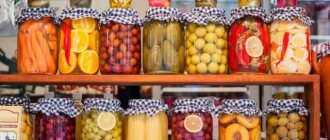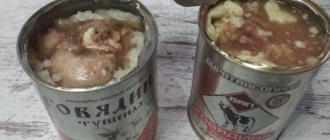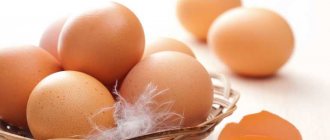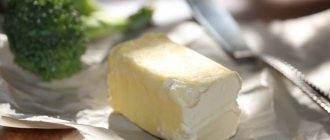Marshmallow is a natural sweetness. Children and even those on a diet are allowed to eat it. Marshmallows are a healthy treat.
The fact is that there is no fat in this dessert. The product contains only carbohydrates, dietary fiber and a small amount of proteins. Carbohydrates have a positive effect on mental activity, and dietary fiber has a beneficial effect on the digestive system.
Many people ask the question: “What is the shelf life of marshmallows?” In this article we will discuss the following questions:
- What ingredients are included in marshmallows?
- GOST marshmallows.
- Marshmallow expiration dates.
- Dates for safe consumption of marshmallows.
- How to store marshmallows at home?
- How to tell if marshmallows are fresh?
- How to determine if a product is natural?
- What happens to marshmallows over time?
- Is it possible to eat marshmallows that have expired?
- Terms of safe use of the product.
Composition of marshmallows
The composition of marshmallows is similar to marshmallows. The shelf life of homemade marshmallows and desserts made in industrial conditions is influenced by numerous factors. First of all, these are the raw materials that are used to make the product.
Homemade marshmallows are made from whipped fruit puree, egg white, thoroughly beaten with a mixer along with sugar. To make dessert, applesauce is most often used, but you can make a dessert based on another fruit. Dyes and other additives can be added to industrial marshmallows, which, in turn, can affect the shelf life.
The outlines of marshmallows are set using additives such as agar-agar, gelatin or pectin.
Shelf life of marshmallows and GOST
The shelf life of the finished product is influenced by many factors:
- Compliance of the finished product with the quality standard.
- Technologies used to make marshmallows.
- The presence of preservatives and various flavoring additives in the product (they increase the shelf life by 20-40%).
- The integrity of the finished product packaging and its availability.
- A type of marshmallow. For example, the characteristics of glazed marshmallows differ significantly from the classic product.
The storage rules and shelf life of the finished dessert are regulated by the standard “Pastile confectionery products” (GOST 6441-2014).
The standard gives dessert producers the right to independently set expiration dates. GOST also states that each manufacturer must determine its own criteria for storing confectionery products.
What determines the suitability of products?
Shelf life and storage depend on the following factors:
- Integrity of packaging: opened, sealed, open cardboard, without packaging.
- Compliance with GOST.
- Manufacturing technologies: home or factory.
- Presence of preservatives.
- Product type: classic, glazed, with added fruit.
The shelf life of agar-agar confectionery pastilles in sealed original packaging is set by the manufacturer. Usually it is no more than 1-3 months.
Terms of safe use
Do not forget about cases when marshmallows are made at home. The shelf life of homemade marshmallows on agar cannot be adjusted using the state standard.
Homemade marshmallows are a natural product. It is worth noting that the shelf life of the product depends entirely on its naturalness. If you notice that marshmallows have a long shelf life, then you can safely conclude that a large number of different preservatives have been added to the product.
Let's find out the shelf life of each type of marshmallow:
- Classic loose marshmallows. In an opened container, it is stored for no more than two weeks, and sometimes less. In a closed container, the dessert stays fresh for a month. The shelf life of marshmallows can be extended if, after opening the dessert box, you place it in vacuum packaging.
- Homemade marshmallows. Keeps in a tightly sealed container in the refrigerator for about a week. Homemade dessert can be stored in the freezer for three months. The shelf life of marshmallows at room temperature does not exceed three days.
- Glazed marshmallows. It can be stored for about three months.
- Soufflé with marshmallow base. This product is usually added to cocoa, coffee or hot chocolate. From the moment of production, the dessert is usable for six months.
- Marshmallows in chocolate. The shelf life of chocolate covered marshmallows does not exceed three months from the date of production.
- Marshmallow candies. They are usable for 15 months.
What are the dangers of consuming expired food?
If the marshmallow has simply dried out, then there will be no negative consequences from eating it.
If the marshmallow is “rotten” and mold has formed in it, then consuming such a product can lead to food poisoning, and people with weakened immune systems can suffer from allergic reactions and fungal diseases.
As a rule, marshmallows rarely “survive” to the point where they can spoil. If there is a suspicion that the product is expired, then you need to remember that ordinary natural marshmallows, made in compliance with GOST, cannot be stored longer than 1 month , and for chocolate marshmallows this period does not exceed 3 months.
Tips for consumers on choosing marshmallows in this video:
How to determine the freshness and naturalness of a product?
When purchasing a product, pay attention to its appearance and properties.
- A high-quality dessert has a smooth surface; if there are ribs, they should be clearly defined. If you notice cracks on the product, then this is a low quality marshmallow.
- Good marshmallows are distinguished by their softness and elasticity. The dessert should not be stringy - this property means that the marshmallow was not stored correctly and it began to deteriorate.
- The shade of marshmallows can vary from yellow to white. The color of the product depends on the amount of egg powder that was added to the dessert.
- The gray color of the marshmallow symbolizes that the manufacturers have violated the recipe. This color is a clear sign that frozen egg whites or soda have been added to the marshmallows.
- Green, red, orange and other colors indicate that food coloring has been added to the dessert. These supplements do not provide any benefit.
- When buying chocolate marshmallows, you need to know what properties the chocolate coating has. A high quality product should shine in the sun. If you notice the opposite, it means the product is not fresh or is of questionable quality.
Marshmallow mastic
And, if you are planning a birthday cake, then here is an idea on how to decorate it. Yes, yes, from marshmallows, but not in the form that is familiar to us. Make a tasty mastic from the delicate consistency. And at least something from it. The flight of fantasy here is limitless.
You can cover the cake itself with it, and make fancy shapes from the remaining sweets. So let's get started!
- marshmallow 50 gr.
- powdered sugar 100 - 150 gr.
- butter 0.5 tbsp. l.
- gel food coloring 1 drop
1. Place a saucepan half filled with water over high heat. Meanwhile, add marshmallows and butter to a saucepan that can be placed in a bowl with liquid. When the water boils in the pan, reduce the burner to medium heat and place the container with the treat in it.
2. After the mass begins to melt and increase in size, start mixing it with a spatula. Then remove the dish from the heat. Continuing to mix the future mastic, sift the powdered sugar over it in parts. Knead a kind of dough. Do this with a spatula first.
3. Once the base is more or less sticky, transfer it to a table dusted with powdered sugar. Continue kneading the mastic with your hands until the ball begins to hold its shape.
4. Roll out the dough into a sausage. Cut it into as many pieces as the number of colors of mastic you need. Make cakes from each piece. Apply 1 drop of dye to each of them. Start kneading each pancake, turning it into a lump, until it is completely colored.
You can make any figures from mastic. Or, without cutting them or coloring them, cover the cake with the rolled out “dough”.
This miracle can decorate your cake for a birthday or other special occasion. Stock up on your imagination and splash it out in the form of mastic decoration for your dessert. Culinary inspiration to you, friends!
Storing marshmallows at home
Some environmental conditions directly affect the quality of marshmallows and the preservation of the beneficial properties of the dessert. Observe the following storage conditions for treats:
- The air temperature should not exceed 25 degrees.
- The product will quickly deteriorate if the air humidity exceeds 75%.
- In a place where there is no direct sunlight, the marshmallows will remain fresh.
- Marshmallow perfectly absorbs foreign odors. Avoid being near foods such as fish, oil and various spices.
- Store marshmallows exclusively in their original packaging.
- Store loose marshmallows in a tied bag or plastic container. Avoid prolonged contact of the dessert with air.
- It is acceptable to store the treat in the refrigerator on the side shelf. Before placing the marshmallows in the refrigerator, place the dessert in a bag.
- Marshmallows can also be stored in the freezer. But keep in mind that this way the marshmallows may lose some of their taste.
What happens to dessert over time?
Over time, the dessert loses moisture and begins to harden. Marshmallows don't become hard so quickly if you add a few pieces of white bread to the bag. Next, let's talk about how to visually determine the expired shelf life of marshmallows. Customer reviews indicate that expired dessert has the following qualities:
- sticky and dry surface;
- changes in product color;
- presence of an unpleasant odor;
- loss of original shape;
- sandy crunch on the teeth when consuming the product;
- presence of traces of mold.
If you notice at least one of these signs, draw the conclusion that the product is spoiled.
How to understand that a product is not suitable for consumption?
Unsuitable marshmallows that have expired or have violated storage conditions have the following distinctive features:
- surface moistening;
- loss of shape;
- dry consistency;
- when consumed - the crunch of sand on the teeth, which is a sign of a violation of production or storage technology;
- presence of mold stains;
- unpleasant odor;
- changed color of the product.
If such signs are present, the treat is hopelessly spoiled and should be thrown away.
Is it possible to eat expired marshmallows?
If the dessert does not have obvious signs of an expired expiration date, then you can safely eat the delicacy. It’s just worth noting that a product that is nearing its expiration date contains much less nutrients than fresh marshmallows.
It is dangerous and unhealthy to consume marshmallows that have obvious signs of an expired shelf life (for example, moldy marshmallows). By eating such sweets, you are putting yourself at risk. You may develop food poisoning or have an allergic reaction.
Experts do not advise consuming expired marshmallows - this will help avoid health problems.
Secrets of working with mastic
Secrets of working with mastic 1) Powdered sugar for mastic should be very finely ground. If there are sugar crystals in it, the layer will tear when rolling.
2) Depending on the type of candy, you may need much more powdered sugar than indicated in the recipe, so you need to stock up in large quantities in advance.
Do you use expired food for cooking at home?
Yes, the main thing is to process it if it is meat or expired kefir for pancakes.
27.72%
No, it is very dangerous and not useful.
36.37%
If the products have fungus or mold, then we throw them away; if they are a couple of days past their expiration date, we use them for food, even without heat or other treatment.
35.91%
Voted: 1952
3) The mastic coating cannot be applied to a damp base - soaked cakes, sour cream, etc. The mastic dissolves quickly from moisture.
4) As a layer between the cake and mastic, you can use butter cream (already frozen in the refrigerator), ganache or marzipan.
5) To glue jewelry onto a mastic coating, the gluing area should be slightly moistened with water. To glue different parts of mastic figures, you can use protein or protein with a small addition of powdered sugar.
6) When exposed to air for a long time, the mastic dries out.
7) It’s better to make small figures in advance and let them dry well so that they don’t go limp on the cake.
 Three-dimensional figures, such as flowers, need to be attached to the cake not long before serving, otherwise, if you attach them and put the cake in the refrigerator, they begin to absorb moisture from the environment and fall off.
Three-dimensional figures, such as flowers, need to be attached to the cake not long before serving, otherwise, if you attach them and put the cake in the refrigerator, they begin to absorb moisture from the environment and fall off.
9) Figures made from mastic can be decorated on top with food paints diluted with alcohol or vodka.
10) If the mastic has cooled down and began to roll out poorly, then you can warm it up a little in the microwave (a few seconds) or in a hot oven and it will become plastic again.
11) You can store unused mastic in the refrigerator (1-2 weeks) or in the freezer (1-2 months), after wrapping it in plastic film.
12) You need to roll out the mastic on starch, with a rolling pin sprinkled with starch (sometimes you can do it on a surface greased with vegetable oil).
13) Having rolled out the mastic to cover the cake, you can cover it with cling film and transfer it to the cake (film side up), smooth it over the film, then while you smooth the mastic will not dry out and cracks and dry wrinkles will not form
14) The mastic lays very smoothly on the cake covered with marzipan.
15) In order for the mastic figures to have a glossy appearance, you can grease them a little with vodka, carefully with a brush, but not with water.
9) Figures made from mastic can be decorated on top with food paints diluted with alcohol or vodka.
Fridge
In the refrigerator, marshmallows are well preserved at a temperature of +10ºC, on the top shelf. In such conditions it is stored for about a month. Both original cardboard packaging and a plastic container with a tight-fitting lid are suitable for storage. Cellophane bags with a tight fastener are also used - this reduces the entry of air and reduces the risk of the confectionery product drying out.
Marshmallows and marshmallows are desserts with similar properties, but different in composition. At first glance, both delicacies look exactly the same: a soft, airy mass that melts in your mouth, but the differences are hidden in the composition. Thus, egg whites are not used to make marshmallows; the dessert mainly consists of sugar, various thickeners to give shape, glucose and corn syrup. Due to the difference in ingredients, the storage rules and shelf life of marshmallows and marshmallows are different.
The article discusses how and how long to store homemade marshmallows, and what to do if they dry out.











